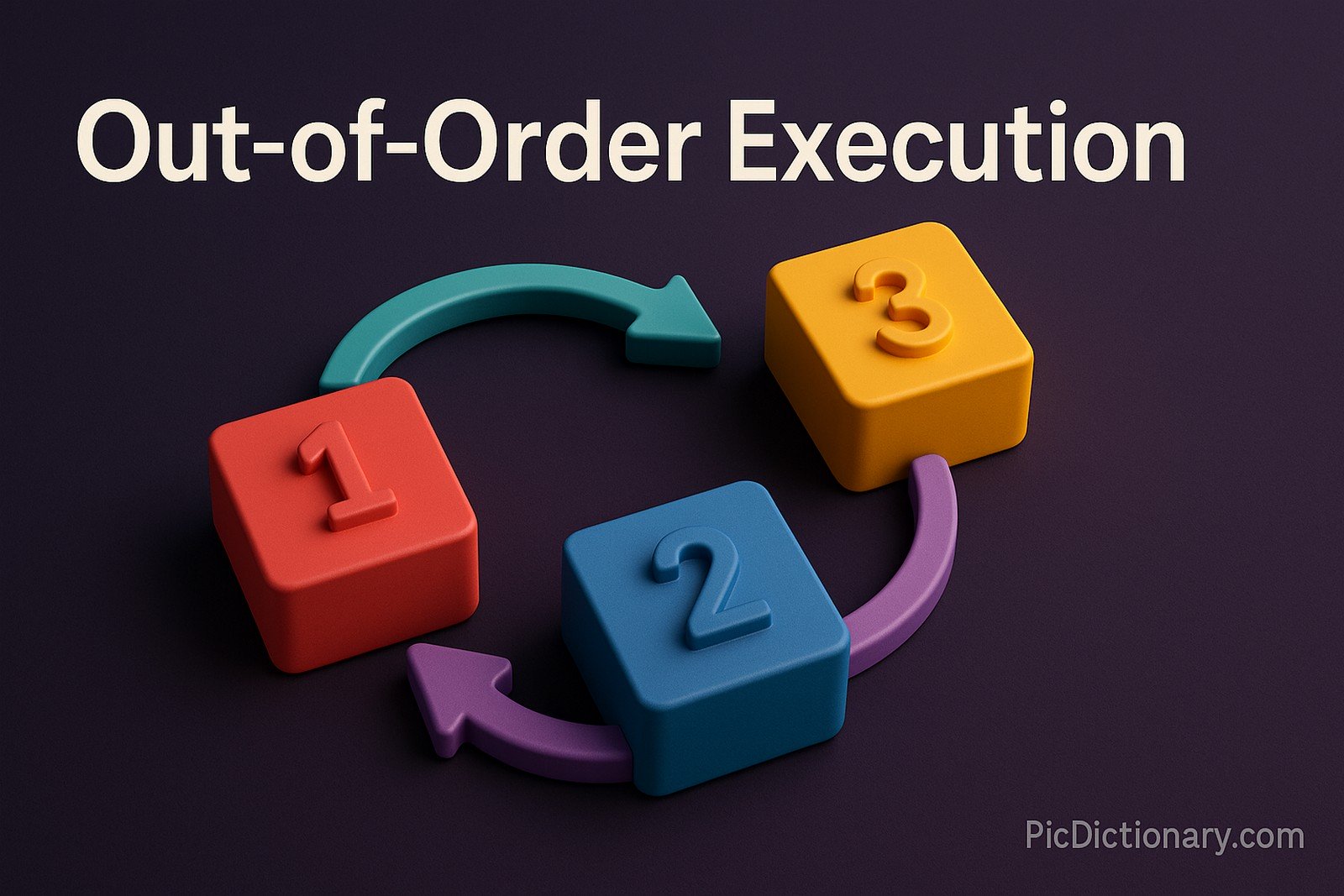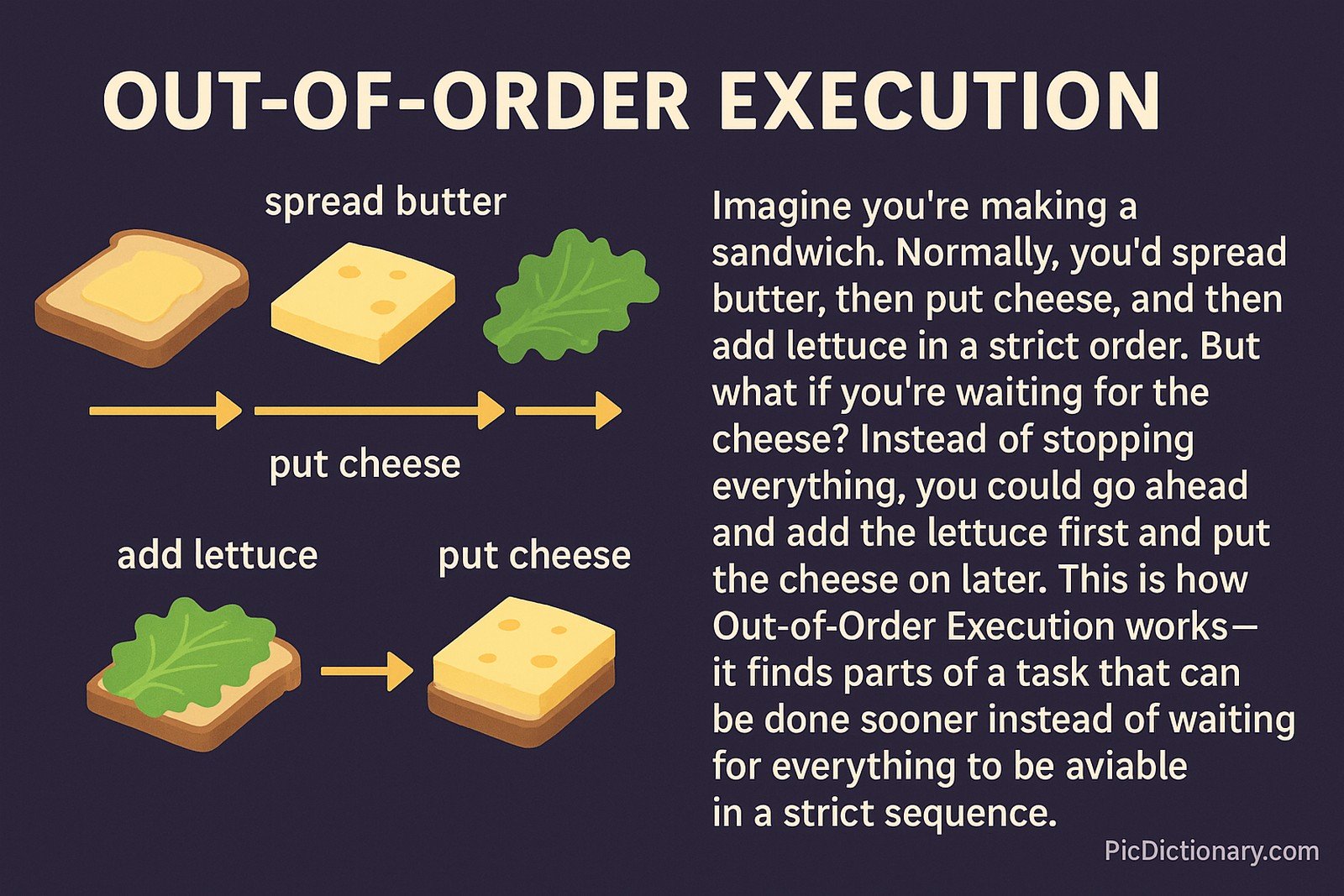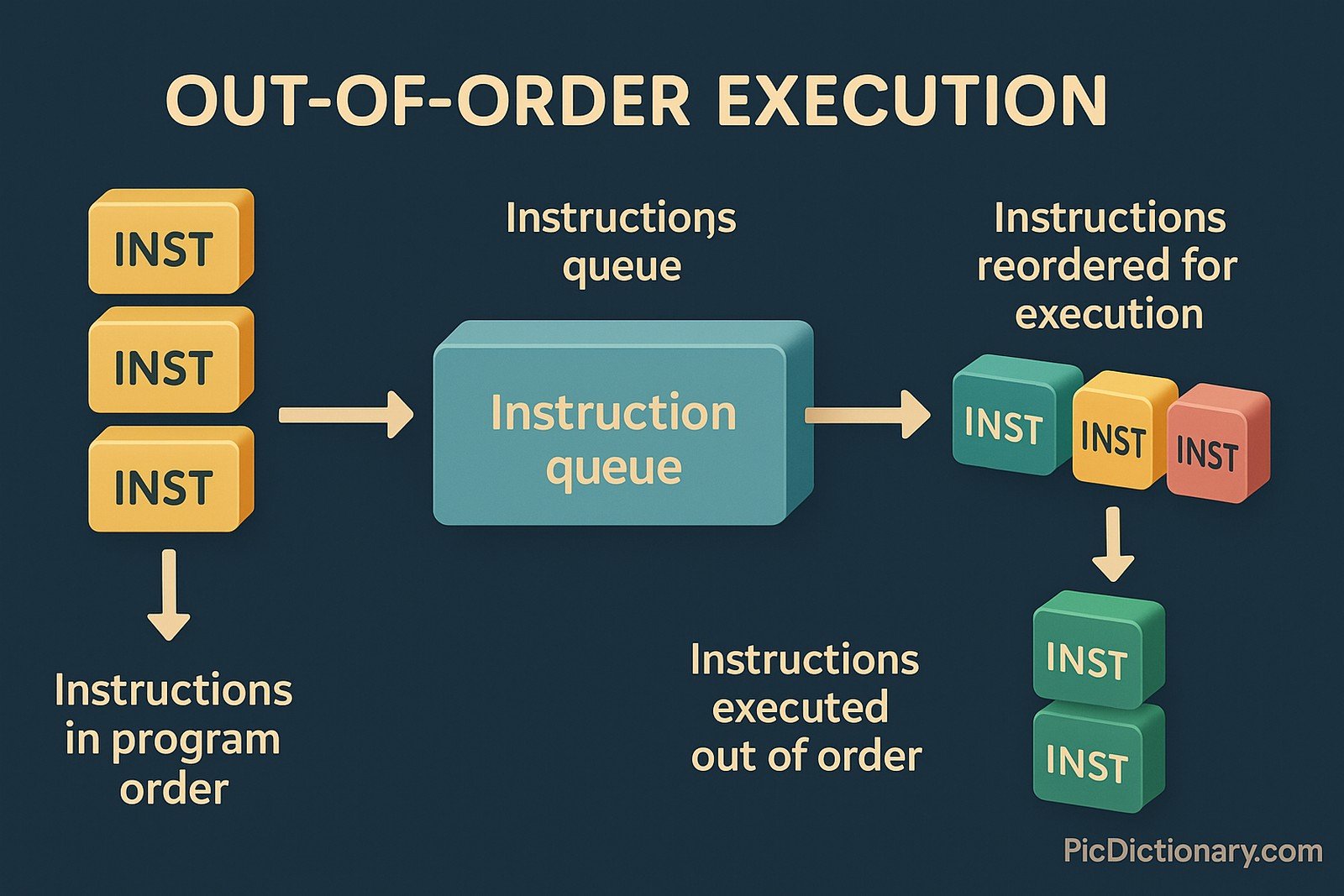Out-of-Order Execution

Quick Navigation:
- Out-of-Order Execution Definition
- Out-of-Order Execution Explained Easy
- Out-of-Order Execution Origin
- Out-of-Order Execution Etymology
- Out-of-Order Execution Usage Trends
- Out-of-Order Execution Usage
- Out-of-Order Execution Examples in Context
- Out-of-Order Execution FAQ
- Out-of-Order Execution Related Words
Out-of-Order Execution Definition
Out-of-Order Execution (OoOE) is a performance optimization technique used in modern microprocessors. Instead of executing instructions strictly in the order they appear in a program, the processor dynamically schedules and executes them as soon as their required resources become available. This method reduces idle CPU cycles and enhances efficiency by reordering independent instructions to maximize parallel execution.
Out-of-Order Execution Explained Easy
Imagine you’re making a sandwich. Normally, you’d spread butter, then put cheese, and then add lettuce in a strict order. But what if you’re waiting for the cheese? Instead of stopping everything, you could go ahead and add the lettuce first and put the cheese on later. This is how Out-of-Order Execution works—it finds parts of a task that can be done sooner instead of waiting for everything to be available in a strict sequence.
Out-of-Order Execution Origin
The concept of Out-of-Order Execution was first explored in the 1960s but was practically implemented in the 1990s as processors became more complex. It became mainstream with processors like the Intel Pentium Pro.
Out-of-Order Execution Etymology
The term "Out-of-Order Execution" refers to the practice of executing instructions in a sequence different from their original order in the program while still ensuring correct results.
Out-of-Order Execution Usage Trends
Over the years, Out-of-Order Execution has become a standard feature in high-performance processors. As demand for faster computing increases, CPU manufacturers have continually refined OoOE techniques to improve efficiency. It plays a crucial role in gaming, artificial intelligence, and cloud computing.
Out-of-Order Execution Usage
- Formal/Technical Tagging:
- Microarchitecture
- Processor Optimization
- Instruction-Level Parallelism - Typical Collocations:
- "Out-of-Order Execution pipeline"
- "instruction scheduling with Out-of-Order Execution"
- "superscalar processor with Out-of-Order Execution"
Out-of-Order Execution Examples in Context
- Modern processors like the AMD Ryzen and Intel Core series use Out-of-Order Execution to enhance performance.
- In gaming consoles, OoOE helps maintain high frame rates by ensuring instructions are processed efficiently.
- Supercomputers leverage Out-of-Order Execution to accelerate scientific simulations by processing multiple calculations in parallel.
Out-of-Order Execution FAQ
- What is Out-of-Order Execution?
It is a technique where the processor executes instructions as resources become available, rather than strictly following program order. - Why is Out-of-Order Execution important?
It maximizes CPU efficiency by allowing independent instructions to execute in parallel, reducing idle time. - How does Out-of-Order Execution differ from In-Order Execution?
In In-Order Execution, instructions run in a strict sequence, whereas Out-of-Order Execution allows reordering for better performance. - Which processors use Out-of-Order Execution?
Most modern CPUs, including Intel Core, AMD Ryzen, and Apple M-series chips, use OoOE to optimize processing speed. - Does Out-of-Order Execution affect software development?
While mostly managed at the hardware level, software developers consider OoOE in optimizing performance-sensitive applications.

Out-of-Order Execution Related Words
- Categories/Topics:
- Computer Architecture
- CPU Performance Optimization
- Parallel Processing
Did you know?
The PlayStation 3’s Cell processor used Out-of-Order Execution to optimize gaming performance. However, developers initially struggled with its complexity, requiring specialized programming techniques to maximize its potential.
PicDictionary.com is an online dictionary in pictures. If you have questions or suggestions, please reach out to us on WhatsApp or Twitter.Authors | Arjun Vishnu | @ArjunAndVishnu

I am Vishnu. I like AI, Linux, Single Board Computers, and Cloud Computing. I create the web & video content, and I also write for popular websites.
My younger brother, Arjun handles image & video editing. Together, we run a YouTube Channel that's focused on reviewing gadgets and explaining technology.



Comments powered by CComment